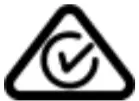LINDY 38181 150m Wireless Bi-Directional IR Extender User Manual
Introduction
Thank you for purchasing the 150m Wireless Bi-Directional IR Extender. This product has been designed to provide trouble free, reliable operation. It benefits from both a LINDY 2-year warranty and free lifetime technical support. To ensure correct use, please read this manual carefully and retain it for future reference.
This Bi-Directional Wireless IR Extender is an ideal solution for extending IR signals in one to one, one to many and many to many configurations with the inclusion of additional transceivers and IR emitter and receiver cables. Multiple connections can be established in close proximity to one another without interference using the integrated radio frequency (RF) rotary dial on each transceiver unit. Each transceiver is also USB bus powered, which creates complete flexibility for installation.
Package Contents
- 2 x Wireless bi-directional IR transceiver
- 3.5mm (male) to IR receiver cable, 1.5m (4.92ft)
- 3.5mm (male) to IR transmitter cable., 1.5m (4.92ft)
- Lindy manual
Features
- Extend Bi-Directional IR wirelessly up to 150m (492.12ft) in open spaces, or shorter distances in spaces with obstacles, such as wall partitions or floors.
- Support for one to one, one to many, and many to many configurations provides complete flexibility in installations
- An integrated 10 channel radio frequency rotary dial makes it simple to create multiple wireless connections near other transceivers.
- Powered via USB, there is no need for any external power supplies increasing flexibility in installations.
Specification
- Bi-directional IR
- Operates at 866MHz
- IR carrier frequency: 20-60kHz
- FSK Modulation
- Receiving sensitivity: -90dBm
- 10 RF Channels
- Channel pairing function
- Chipset: AMICCOM A7129
- IR transmitter & receiver connector: 3.5mm
- Range: 150m (492.12ft) without obstruction. This distance is vastly reduced when obstacles are between the transmitter and receiver units
- USB powered
- Power Requirements: 5V 0.5A
- Operating Temperature: -40°C – 85°C (-40°F – 185°F)
- Storage Temperature: -55°C – 125°C (-67°F – 257°F)
- Humidity: 10-85% RH (non-condensing)
Installation
Please see the steps below to successfully install this product.
- Set the RF rotary dial on the back of each receiver to the same channel using a small, flat head screwdriver.
- Connect a transceiver to a USB port on either an AV device, or USB charger close to the device you wish to control.
- Insert the 3.5mm IR emitter cable to the IR emitter port on the transceiver and place the emitter in direct line of sight of the IR port on the device you want to control.
- Connect a transceiver to a USB port on either an AV device or USB charger in a convenient location no further than 150m (492.12ft) away from the transceiver located by the device to be controlled.• Insert the 3.5mm IR receiver cable to the IR receiver port on the transceiver and place the receiver in a direct line of sight of the IR remote control or smart home IR hubs IR port. Installation is now complete.
Operation
Alternative configurations
When creating one to many configurations to control multiple devices from one position, install further transceivers close to each device you wish to control, connect an extra IR emitter cable to the IR emitter port on each transceiver and place each emitter in direct line of sight of the IR ports on each device. When creating many to many configurations, simply add further transceivers to convenient locations and an extra IR receiver cable to each one. Ensure each transceiver is set to the same RF channel using the rotary dial.
Radio Frequency Channels
Each transceiver unit has an integrated radio frequency rotary dial on the back of the unit with a total of 10 channels (0-9). This is helpful in creating multiple connections in a limited space by alternating which RF channel is in use.
CE/FCC Statement
CE CertificationLINDY declares that this equipment complies with relevant European CE requirements.
UKCA CertificationLINDY declares that this equipment complies with relevant UKCA requirements.
FCC CertificationThis equipment has been tested and found to comply with the limits for a Class B digital device, pursuant to part 15 of the FCC Rules. These limits are designed to provide reasonable protection against harmful interference in a residential installation.You are cautioned that changes or modification not expressly approved by the party responsible for compliance could void your authority to operate the equipment.This device complies with part 15 of the FCC Rules.
Operation is subject to the following two conditions:
- This device may not cause harmful interference, and
- This device must accept any interference received, including interference that may cause undesired operation.
The enclosed power supply has passed Safety test requirements, conforming to the US American versions of the international Standard IEC 60950-1 or 60065 or 62368-1.
Hersteller / Manufacturer (EU):LINDY-Elektronik GmbHMarkircher Str. 2068229 MannheimGermanyEmail: [email protected]Tel: +49 (0)621 470050
Manufacturer (UK):LINDY Electronics LtdSadler Forster WayStockton-on-Tees, TS17 9JYEngland[email protected]Tel: +44 (0)1642 754000
Declaration of Conformity
We, LINDY Electronics LTD. hereby declare that the product(s)
LINDY Bi-directional Wireless IR extenderNo. 38181
conforms to with the requirements of the following EU Directives:
EU Directness EU Directive 2014/35IEU (RED / Radio Equipment Directive)EU Directives 2011/65/EU. 2015/863/EU amendment Annex IL Article 13 (RoNS II)
The following standards were treed to evaluate the product:
ETSI EN 301489-3 V2.1.1:2017ETSI EN 301 489.1 V2.1.1.:2017EN 55032:2015EN 62479:2010ETSI EN 300 220.2 V3.1.1:2017ETSI EN 300 220.1 V3.1.1:2017EN 50581:2012. EN IEC 63000:2018
Date: 17 December 2019Signature: Name: Darren N. CaseyPosition: Managing Director, LINDY Electronics LTDLindy Supplier Office Reference: 720156 230919L/PF/103a/DOC/EMC-RoHS Issue 9
LINDY Electronics LimitedSadler Forster WayTeesside Industrial EstateThornaby. Stockton-on-TeesTS17 9JY. EnglandGeneral T +44 16412 7514000Fax: +401 1642 754031[email protected]Accounts: T +44 1642 754035Fax: +441642 754031[email protected]Co. Reg No. 02132710 (Registered office as above)Vat Reg No. GB 472 0100 00
EU – CE Declaration of Conformity
LINDY-Elektronik GmbH hereby declares that the product(s)
LINDY Bi-directional Wireless IR ExtenderNo.: 38181is in conformity with the requirements of the following EU Directives:EU Directive 2014/35/EU (RED / Radio Equipment Directive)EU Directives 2011/65/EU, 2015/863/EU Amendment Annex II, Article 13 (RoHS II)
The following Standards were used to evaluate the product(s):
ETSI EN 301 489-3 V2.1.1:2017ETSI EN 301 489-1 V2.1.1:2017EN 55032:2015 EN 62479:2010ETSI EN 300 220-2 V3.1.1:2017ETSI EN 300 220-1 V3.1.1:2017EN 50581:2012, EN IEC 63000:2018
Dr. Rainer BachmannHead of Global Product Compliance
Mannheim, 16.12.2019
Ref. LINDY S-Office: 720156 23092019LINDY-Elektronik GmbHMarkircher Str. 20D-68229 MannheimTel: +49 62147005-0Fax: +49 62147005-990[email protected]lindy.com
Recycling of Electronic Products
WEEE (Waste of Electrical and Electronic Equipment),Recycling of Electronic Products
Europe, United Kingdom
In 2006 the European Union introduced regulations (WEEE) for the collection and recycling of all waste electrical and electronic equipment. It is no longer allowable to simply throw away electrical and electronic equipment. Instead, these products must enter the recycling process.
Each individual EU member state has implemented the WEEE regulations into national law in slightly different ways. Please follow your national law when you want to dispose of any electrical or electronic products. More details can be obtained from your national WEEE recycling agency.
Tested to comply withFCC StandardsFor Home and Office Use!




References
[xyz-ips snippet=”download-snippet”]
